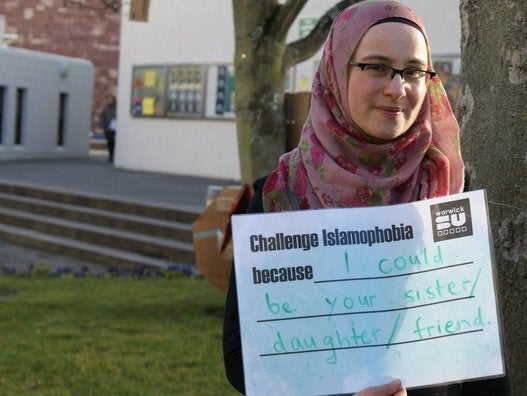In his mandate letter to Public Safety Minister Ralph Goodale, Prime Minister Justin Trudeau included the creation of an Office of the Community Outreach and Counter-Radicalization Coordinator.
In the 2016 federal budget, the Liberal government pledged to spend $35 million over five years to set up such an office. So far, the Liberal government hasn't made any official announcement about the office, although Public Safety Minister Ralph Goodale hinted to some news outlets that the so-called office would focus on "radicalization to violence of all kinds," as opposed to the previous Conservative government's strategy of exclusively targeting Muslim Canadians.

According to some media reports, it seems that the Canadian government's counter-radicalization model gets its inspiration from what the British government has already implemented in recent years: the Prevent strategy, a program that proved to be a failure at many levels and by all standards.
Two NGOs, the U.S.-based Open Society Justice Initiative and Rights Watch U.K., studied Prevent and its sister program, named Channel, and found in 2016 major flaws with them both. One of the main criticisms is that these programs are based on profiling and targeting Muslims, particularly in schools, in kindergartens and in health institutions. But most importantly, there is a lack of consensus among academic experts that these counter-radicalization programs are scientifically reliable.
The notion of certain "indicators" identified as risk factors that would draw individuals to terrorism has been discredited by many scholars: "Indeed, the claim that non-violent extremism -- including 'radical' or religious ideology -- is the precursor to terrorism has been widely discredited by the British government itself, as well as numerous reputable scholars."
The narrative that "Muslim youth are attracted to violence and Jihad" remains very widespread.
The creation of such a program relies on several false premises. It wrongly assumes that Muslim youth are prone to espouse violent ideologies or perpetrate violent crimes more than their peers. Recently, Statistics Canada released the disturbing figures about hate crimes in Canada that happened in 2015. In summary, the new figures convey to us two main points:
- That Muslims communities are among the groups that saw the highest increase of hate crimes perpetrated against them.
- That the perpetrators of these heinous acts are young men between the age of 18 and 24.
These figures are not surprising to say the least. Many grassroots groups have in the last couple of years shown and documented the rise of Islamophobic acts. Simultaneously, academics brought attention to the rise of violent right-wing extremist and racist groups in Canada.
Neither the provincial or federal governments took these indicators or studies seriously and never acted upon them to present new legislation to fight this phenomenon. The narrative that "Muslim youth are attracted to violence and Jihad" remains very widespread. Meanwhile, groups like Pegida, La Meute, Soldiers of Odin and the Jewish Defense League, to name only a few, are thriving and gaining in popularity and seeing their membership increase. Their protests are also becoming more public and more provocative. Up until today, an investigative piece reported about a new violent anti-Muslim group -- III%, or the "three per cent," -- which claims that they are heavily armed and ready to wage a war on Canadian soil.

After the attack on the Quebec City Mosque, last January 2017 and the assassination of six Muslim men, federal, provincial and local politicians denounced the attacks and said some comforting words to the Muslim communities across the country. Nevertheless, no concrete action was taken to tackle Islamophobia. No extra funding (of very little) was given to schools to fight Islamophobia through education programs. No new measures were adopted by local police to make arrests and ensure that prosecutions of hate crimes are successful.
The only concrete initiative that was undertaken was the introduction of motion,M-103 in the Parliament by Liberal Member of Parliament Iqra Khalid. One of the purposes of the motion was to "study how the government could develop a government-wide approach to reducing or eliminating systemic racism and religious discrimination, including Islamophobia, and collect data to provide context for hate crime reports and to conduct needs assessments for impacted communities." The motion was never intended to be a piece of legislation, but simply a proposal to draw attention about an increasing phenomenon.
The media and political backlash that ensued after this initiative couldn't be justified by the real impact this motion proposed to have. Indeed, it created a huge controversy among politicians; some of them hid behind the classic pretext that the use of the word "Islamophobia" would mean the end of freedom of expression and free speech, and the destruction of our democracy and liberal values.
There has never been a public debate about the root causes of terrorism in Canada.
In 2014, when two Muslim individuals attacked and killed two Canadians Forces members, one in Saint-Jean in Quebec and the other near the Parliament Hill in Ottawa, then-Prime Minister Stephen Harper introduced Bill C-51, which became the Anti Terrorism Act 2015 -- one of the most intrusive pieces of legislation threatening the civil liberties of all Canadians. It was widely denounced by several law professors, former judges and human rights activists. Some of the politicians who last February vehemently opposed M-103 voted in 2015 for Bill C-51 and weren't that concerned about the real impact the legislation had on the freedom of expression and civil liberties.
Moreover, there has never been a public debate about the root causes of terrorism in Canada. Citing Canada's successive military missions in the Middle East -- Afghanistan, Iraq, Libya, Syria -- as one of the reasons that push some young Canadians to join violent groups is practically taboo. Linking these attacks to mental-health issues, drug addictions or social and economical marginalization are brushed off as legitimization of violence. Rather, the general public is made to believe that these violent acts are solely explained by the faith and religious beliefs of the perpetrators, which happened to be Islam.
This reductionist approach to define, tackle and explain terrorism continues to justify the creation of a $35-million public office. Rather, the money could have been spent on development of education programs in schools to fight hate, on special training for law enforcement forces to understand racial profiling and on NGOs that offer mental and economic support to marginalized youth.
Follow HuffPost Canada Blogs on Facebook
Also on HuffPost:
